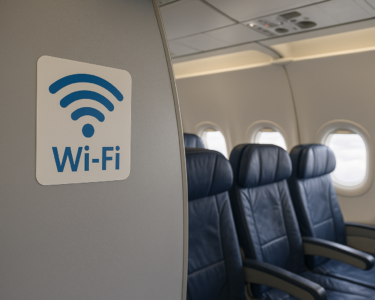In the world of modern avionics, seamless communication between onboard systems is critical for ensuring safety, efficiency, and performance.
As aircraft become more advanced, the need for standardized protocols to manage data exchange between various avionics systems grows increasingly important.
This is where ARINC standards play a crucial role. ARINC 628, in particular, is designed to facilitate communication between avionics subsystems, ensuring reliable data exchange and interoperability across different manufacturers and platforms.
ARINC 628 is specifically tailored to enhance the integration and communication of multiple avionics components within an aircraft, from navigation and communication systems to flight control and cockpit displays.
By providing a common interface for these systems, ARINC 628 streamlines operations, reduces complexity, and improves overall system performance.
In this article, we will explore the key features of ARINC 628 and its role in enhancing data exchange in avionics, highlighting its significance in today’s rapidly evolving aerospace industry.

Core Features of ARINC 628
1. Standardized Communication Interface
ARINC 628 provides a standardized communication framework that enables various avionics systems to exchange data seamlessly.
It establishes a common language for different onboard components, ensuring that subsystems such as navigation, flight control, and communication can interact without compatibility issues.
This standardization is crucial in minimizing integration complexity across different aircraft manufacturers and avionics suppliers.
2. Data Transmission Protocols
The standard supports robust data transmission protocols designed to ensure reliable and efficient communication between avionics systems.
ARINC 628 defines how data is formatted, transmitted, and received, reducing errors and improving data integrity. The protocols are optimized for high-speed, high-accuracy data transfer, which is essential for real-time avionics operations.
3. Real-Time Data Exchange
ARINC 628 is designed to support real-time communication, a critical aspect of avionics systems that demand quick, accurate data exchange to ensure flight safety and operational efficiency.
The ability to facilitate instant communication between subsystems, such as cockpit displays and flight control systems, allows for better situational awareness and faster decision-making.
4. Inter-System Connectivity
One of the key strengths of ARINC 628 is its support for inter-system connectivity. It allows various avionics systems to communicate with each other, providing the backbone for integrated aircraft operations.
This feature ensures that critical systems, such as navigation, communication, and environmental control, can share data efficiently, contributing to a more unified and effective aircraft control environment.
5. Scalability and Flexibility
ARINC 628 is designed to be highly scalable, making it adaptable to a wide range of aircraft sizes and types. Whether for commercial jets, military aircraft, or smaller private planes, ARINC 628 can support diverse configurations and system requirements.
Its flexibility allows it to be integrated into both new aircraft designs and existing platforms, enabling manufacturers to upgrade and enhance their avionics systems without overhauling the entire architecture.
Additional Key Features:
- Modular Design: ARINC 628’s modular structure allows for easy customization, enabling avionics engineers to implement specific components as needed based on the aircraft’s requirements.
- Multi-System Support: It allows multiple independent systems to run simultaneously without interference, ensuring stable and secure data transmission across all avionics components.
These core features make ARINC 628 a vital standard in avionics, enabling safe, reliable, and efficient communication between the complex subsystems that modern aircraft rely on.

Benefits of ARINC 628 in Avionics
1. Improved Interoperability
ARINC 628 enhances interoperability among different avionics systems and components from various manufacturers. By providing a standardized communication interface, it ensures that systems can easily integrate and exchange data, regardless of the supplier.
This capability is vital for maintaining compatibility in multi-vendor environments, allowing operators to mix and match components without worrying about integration issues.
2. Enhanced Data Integrity and Reliability
With robust data transmission protocols, ARINC 628 improves the integrity and reliability of data exchange. It incorporates error-checking mechanisms and validation processes that minimize the risk of data loss or corruption.
As a result, critical information is transmitted accurately, which is crucial for flight safety and operational decision-making.
3. Simplified Integration of Third-Party Systems
The standardization provided by ARINC 628 facilitates the integration of third-party avionics systems and components. Manufacturers can more easily incorporate new technologies and innovations into existing aircraft without extensive redesigns or modifications.
This flexibility encourages technological advancements and enables operators to upgrade their systems with the latest solutions available in the market.
4. Contribution to Reduced Downtime and Maintenance Needs
By ensuring reliable communication between avionics subsystems, ARINC 628 helps reduce system downtime caused by communication failures.
The standardized nature of the protocol makes troubleshooting and maintenance more efficient, as technicians can quickly identify and address issues. This efficiency contributes to increased aircraft availability and reduced maintenance costs.
5. Streamlined Data Exchange for Operational Efficiency
ARINC 628 supports real-time data exchange, enabling avionics systems to share critical information instantly. This capability enhances operational efficiency by improving situational awareness for pilots and ground crews.
Timely access to data helps in making informed decisions during flight operations, ultimately leading to safer and more efficient flights.
6. Support for Future Technologies
As avionics technology continues to evolve, ARINC 628’s scalable and flexible design ensures it can adapt to future advancements.
This adaptability allows it to support emerging technologies, such as advanced data analytics, machine learning, and automation in avionics systems. By incorporating these technologies, ARINC 628 helps modernize aircraft and improve their operational capabilities.
7. Compliance with Regulatory Standards
ARINC 628 aligns with various regulatory standards set by aviation authorities, ensuring that aircraft using this standard meet essential safety and performance requirements. Compliance with these regulations enhances the credibility of aircraft systems and contributes to overall flight safety.

Conclusion
ARINC 628 plays a pivotal role in modern avionics by enhancing data exchange and communication between various onboard systems. Its standardized framework fosters interoperability among diverse components, ensuring that manufacturers can integrate systems seamlessly, regardless of supplier.
By facilitating reliable and real-time data transmission, ARINC 628 significantly improves operational efficiency, enhances safety, and reduces maintenance needs.
As the aerospace industry continues to advance, the importance of robust communication standards like ARINC 628 cannot be overstated. Its flexibility and scalability make it a future-proof solution, enabling the adoption of new technologies and innovations in avionics.
Ultimately, ARINC 628 not only supports the current operational requirements of aircraft but also positions them to embrace the challenges and advancements of the future.
In summary, ARINC 628 is an essential standard in avionics that empowers the industry to enhance aircraft performance, ensure safety, and maintain competitiveness in a rapidly evolving technological landscape.






